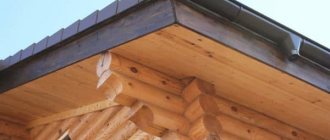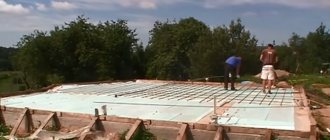Think over the layout
Depending on the shape of the tile, there are many laying patterns to achieve different patterns. As a rule, all manufacturers supply their products with similar information, so you should not have a problem choosing a circuit.
Do not forget that the more complex the shape of the paving slabs and the pattern that needs to be obtained, the higher the labor intensity and the more trimming. If you want to simplify your work as much as possible, choose rectangular or square tiles, and make paths and platforms with straight lines. Ideally, generally adjust the paving area to the size of a whole number of tiles in order to avoid trimming.
Types and recommendations for selection
Choosing tiles is a very important issue. It all depends on the technical requirements for the material, financial capabilities, and personal preferences.
What types of paving slabs are there (based on raw materials):
- Natural – made of hard/soft stone
- Made from artificial stone
- From ceramics and various firing materials
- Made from monochrome or colored concrete - the most popular option for installation where there are no very high loads
- From polymer mixtures
In individual construction, paving slabs are most often made from concrete mixtures (painted or plain). The material has excellent technical characteristics and an affordable cost. High-quality concrete tiles are made by vibration casting or vibration pressing; stamped tiles are also available for sale.
How to choose the right paving slabs:
- Thickness – for pedestrian paths in private households, a thickness of 4 centimeters is sufficient, for car parking – 6 centimeters. For a sidewalk on the street along the site, it is better to choose 6 centimeters, and for a public road - at least 8 centimeters.
- Color and shade - it all depends on the elements of the architectural ensemble and personal preferences.
- Vibro-casting or vibro-compression - the second option allows you to obtain tiles that are more durable, but when laying at the dacha with your own hands, the vibro-casting method is also quite suitable.
- The quality of the material is checked upon purchase: the tile must be of an ideal geometric shape, without chips or deformations, evenly painted, and produce a ringing sound.
- Shape – here it is also worth focusing on preferences and installation features: for multi-colored ornaments you will need a laying pattern, there may be a lot of waste. Simple two/three color patterns will take less time to work on.
Make the markings
- Calculate the width of the future path by adding up the number of tiles in the row. Don't forget to include the thickness of the borders and add 5-10 cm on both sides.
- Measure the required distance with a tape measure and use wooden or metal pegs to mark the area for laying the paving slabs. To keep them out of the way, use two pins at each corner and drive them in at a distance of 20–30 cm.
- Stretch a cord between the pegs and outline the perimeter of the work area.
- Check the diagonals of the resulting rectangle and make sure they are the same. If the distances are different, achieve the exact size by moving the pegs.
Prepare the base
dvabrevna.ru
- If there is old covering on the ground, remove it.
- Carefully remove the topsoil with a shovel. Usually it is 30–40 cm.
- Make sure to remove all roots and grass to prevent seeds from growing through the tiles.
- Level the soil with a rake and compact it well over the entire area of the trench using a hand tamper.
- To drain water from the surface of the tile, form a slope on one side of the trench at the rate of 1 cm per linear meter.
Required materials and tools
To create a paving stone walkway near your home, you will need the following materials:
- river or washed sand of medium or coarse fraction;
- gravel or crushed stone fraction no more than 40 mm;
- cement grade not lower than PC400;
- paving stones with a thickness of at least 60 mm;
- curbstone;
- geotextile or other similar material.
The amount of materials depends on the area of coverage, the chosen technology for preparing the base and how the paving stones will be laid with your own hands.
When performing work you will need the following tool:
- concrete mixer and wide container for ready-made building mixtures;
- vibrating plate or manual rammer;
- angle grinder (grinder) with a diamond disc;
- bayonet and shovel;
- building level at least 1 meter long;
- plaster rule;
- rubber and metal hammer;
- mason's trowel and spatula;
- cord and stakes;
- soft brush;
- buckets.
In the case of a concrete base, you will also need a soft tying wire and a hook for tying reinforcement.
Install curbs
thewalls.ru
Paving slabs are a relatively mobile surface, so curb stones are always installed along the edges of the paving. They prevent it from spreading due to soil heaving. To fix the curbs themselves, they are installed on concrete. The height of the curb can be either higher than the tile or flush with its surface.
- Using a shovel, dig small trenches slightly wider than the curb on both sides of the site.
- Prepare a mixture according to the following calculation: 1 bucket of cement, 3 buckets of sand and 2 buckets of crushed stone. Add a little water to make the solution thick and not runny.
- Place the solution in the trenches and place curbs on top.
- Press the stones onto the concrete by tapping them with a rubber mallet and level them along the line to the desired height.
- Wait a day for the material to harden.
Safety precautions
Organization of work requires compliance with safety measures:
- The workplace is cleared of foreign objects.
- If the slab is laid on a concrete base, the notches are made using safety glasses.
- All work is carried out with rubber gloves so that the skin is not injured or corroded by the cement mortar.
- Sorting the material and processing the edges of the tiles is carried out using thick gloves.
- Knee pads are used to protect the legs.
On our website you will also learn step-by-step instructions for laying paving stones with your own hands! How to work with such surface paving elements?
Read about the features of laying porcelain stoneware and how to properly prepare the base for this material in this article.
You will learn how to make steps from paving slabs with your own hands by reading our following material:.
Make a pillow
mg-trotuar.ru
Paving slabs are laid on a well-compacted pad. Sand is sufficient for pedestrian garden paths and playgrounds; driveways to garages and parking lots are additionally reinforced with a layer of crushed stone. Also, a gravel bed is used when the groundwater level is high, acting as drainage and preventing heaving. Sometimes, for greater strength and protection against root germination, geotextiles are laid between the soil and the bedding.
How to make a walkway cushion
- Place geotextiles on the compacted soil (optional).
- Pour sand into the trench and moisten it with water.
- Compact well with a tamper to obtain a layer of 15–20 cm.
- With sufficient density, shoe marks will not remain on the sand.
How to make a pillow for a platform under a car
- Place geotextiles on the compacted soil (optional).
- Line the bottom of the trench with a thin layer of sand and compact it thoroughly.
- Fill in medium-fraction crushed stone and compact to obtain a layer of 20–25 cm.
- Sprinkle sand on top, moisten and compact to a layer of about 5 cm.
Treating tiles before laying
Before laying paving slabs at the dacha or around the house, they must be properly processed. To do this, hydrophobic compounds are used that protect the material from moisture and frost, extend its service life, eliminate fungus and mold, and eliminate the possibility of efflorescence.
How the processing occurs: the tile is dipped into a hydrophobic solution, dried, then both procedures are repeated. During the process, the products are inspected for defects, chips and cracks. Rejected tiles are set aside - they can be used in inconspicuous areas, and pieces may also be needed in the process of laying out patterns.
Prepare and level the cement-sand mixture along the beacons
- Mix a dry cement-sand mixture (CSM) at the following rate: 1 bucket of cement per 5-6 buckets of sand.
- Install level beacons from UD profiles for drywall or pipes. Form a slope of 1 cm by 1 m for water drainage.
- Fill a 2–4 cm high layer of CPS between the beacons and level it using the rule.
- When pits form, add the remaining amount of mixture and pull along the guides until the surface is level.
- Carefully remove the beacons and fill the resulting voids with the DSP.
Preparatory work
Before starting work, you need to purchase tiles, consumables, and tools.
How to calculate the amount of material needed
The calculation method depends on the drawing that is supposed to be posted. Complex compositions require a special approach and specific recommendations. The quantity is calculated based on the selected pattern, after drawing up a preliminary sketch plan of the entire site.
If simple shapes are chosen, it is worth remembering the school geometry course and calculating the area of a specific geometric figure that the site or its individual parts represent.
The area of all parts that need to be covered will be taken as a basis. The number of tiles per square meter is indicated by the manufacturer on the packaging , so the required number of sets to be purchased is calculated using simple mathematical operations.
Experts advise purchasing material with a reserve of one square meter for each part of the surface to be coated. This is necessary so that there are fewer joints in oblique corners.
REFERENCE. There are special online calculators that automatically calculate the number of tiles after entering parameters (area of the plot, size of the blocks). Using it, accurate calculations are made.
Additionally, a curb is purchased , which is installed to prevent the blocks from moving along the edge. Its quantity is calculated according to the length of the perimeter of the covered area.
When purchasing material and planning the size of the covering, you need to try to make calculations in such a way that there is no need to lay cut pieces along the edges. The fewer cut pieces there are in the coating, the more aesthetically pleasing it will look.
What you will need
Installing paving slabs with your own hands requires the use of special tools:
- Tamping
- Roulette.
- Rubber hammer.
- Line or cord for marking.
- Rule.
- Level.
- Grinder with discs for concrete.
- Master OK.
- Rake.
- Broom.
In addition to tools, consumables are purchased:
- Sand (for a standard area 2-3 tons).
- Cement.
Preparing the base
Careful preparation of the base is the key to quality installation. After drawing up the plan, markings are made using pegs with a thread stretched over them . The quality of the soil in various parts is preliminarily assessed, and the sides of the slope are determined. If it is located towards the house and yard buildings, a drainage system is first thought through.
The sites are carefully leveled , soil is removed to a height of 15-20 centimeters. Then the surface is compacted. At the same time, drainage and sewer pipes are being installed.
After leveling and compacting, a cushion of crushed stone is poured . For garden paths made of paving slabs with your own hands, the thickness of the layer is 10-15 centimeters; for parking areas and roadways, the thickness of the crushed stone doubles.
The pillow is compacted by a special machine and covered with geotextile, which will prevent sand from penetrating between the crushed stone. In areas with weak, loose soil, geotextiles are additionally laid under crushed stone.
The prepared cushion is poured with a cement-sand mixture (1X5) , sand is poured on top of such a height so that the slabs are 1 cm above the surface before compaction.
ADVICE. To prepare the base, it is advisable to use guides made of boards along the height of the pillow. The foundation requires especially careful preparation if the site has soft soil. It is compacted after moistening.
The entire further process will depend on the quality of foundation preparation.
Important to avoid mistakes! If you want to know how to lay paving slabs with your own hands, watch this video of a man who decided to lay them incorrectly:
Lay paving slabs
stroyrom.ru
- Start laying paving slabs from the corner that will be most visible and from the lowest point if there is a natural slope at the site.
- Install the tiles away from you so as not to step on the prepared surface.
- Place the bricks in their place, pushing them down and knocking them tightly together with a rubber hammer.
- Use a level to check that the horizontal plane is level.
- If any tile becomes lower than the others, remove it and add a little TSP.
- If there are undercuts, first lay all the whole paving stones, and then use an angle grinder to cut out pieces of the required shape and install them.
How to lay paving slabs correctly with your own hands (step-by-step instructions)
Below are step-by-step instructions for laying paving slabs.
Select the layout of paving slabs - diagrams, patterns, drawings
The design of the tile depends only on the imagination of the person who lays it. However, there are several established patterns that are used most often and which can often be found on city streets and garden plots. Here they are.
- Alternating stripes. It is a simple pattern, the essence of which is that a path or paved area is cut through by two thin strips of tiles of a different color. The width of such strips is usually 2-3 bricks.
- Imitation of brickwork. The tile imitates masonry made of large bricks. This imitation is also achieved by alternating colors. Elements of one tone form rectangles (bricks), and elements of a different tone form mortar veins between them.
- "Herringbone." In this case, the paving stones are laid according to the Soviet pattern for laying parquet boards - herringbone.
- Chess. The tiles are laid to imitate a chessboard. To do this, identical alternating squares are formed from light and dark paving stones.
- "Ladder". The tile bricks are laid out in such a way that they look like a ladder.
- Circle. This type of masonry consists of one or more concentric circles of tiles of different colors. It is difficult to use on paths, but for round or oval paved areas it is ideal.
It should be remembered that when choosing a pattern, you need to take into account the shape of the tile. For example, wide square paving stones are not suitable for a “ladder” or “herringbone”, but for checkerboard laying or imitation brick it will do.
Marking for laying paving slabs
Before starting work, it is necessary to mark the area. It is carried out along the lines of the future path or paved area.
Using pegs and cord, straight lines are laid. They will be the boundaries of the base of the future paving stones. In order for the masonry to be perfectly straight and not deviate from straight lines, the tensioned cord must be checked using a building level. Otherwise, the path may “lead”, and this is not only unsightly, but also impractical, and also affects the durability of the laid tiles.
Preparing the base for paving slabs
The technology for preparing the base for tiles consists of several stages.
- Leveling the base. The base must be absolutely flat, so we remove all the stones from it, dig in holes, remove hummocks and tubercles. You will also need to remove the turf layer - under no circumstances should tiles be laid on grass.
- Creating a recess for the base. If you do not want the tile to rise too much above the rest of the area, you need to create a recess for its base. To do this, it is necessary to remove 20–25 cm of soil from the area that we previously fenced. Usually this is enough to accommodate the base. However, in each case the depth is determined individually - it can be either less or more. First of all, focus on the volume of materials intended for the base.
- Creating a base cushion. The next stage is creating the foundation. Everything is simple here - pour sand or crushed stone into a previously dug hole, and then level it. Difficulties may arise with leveling - it is quite difficult to carry out. However, the procedure can be significantly simplified. To do this, sand should not be poured in immediately, but in parts. Before filling, we place two metal pipes or two pieces of metal profiles in the area to be filled. We pour sand between them, then level it with a board or metal plate. Ideally, we get an almost perfectly flat surface and fill the next section in exactly the same order.
Fill the seams
remkvartur.ru
- Carefully sweep away any debris remaining after installation.
- Spray the paved surface generously with low pressure water and let it dry.
- Sprinkle the tiles with the dry mixture on which they were laid, and thoroughly hammer all the joints and gaps between the borders using a broom or broom. Remove any excess.
- Spray the seams with a gentle pressure of water and, after drying, fill the DSP again.
- If necessary, repeat the procedure until the joints are completely filled.










